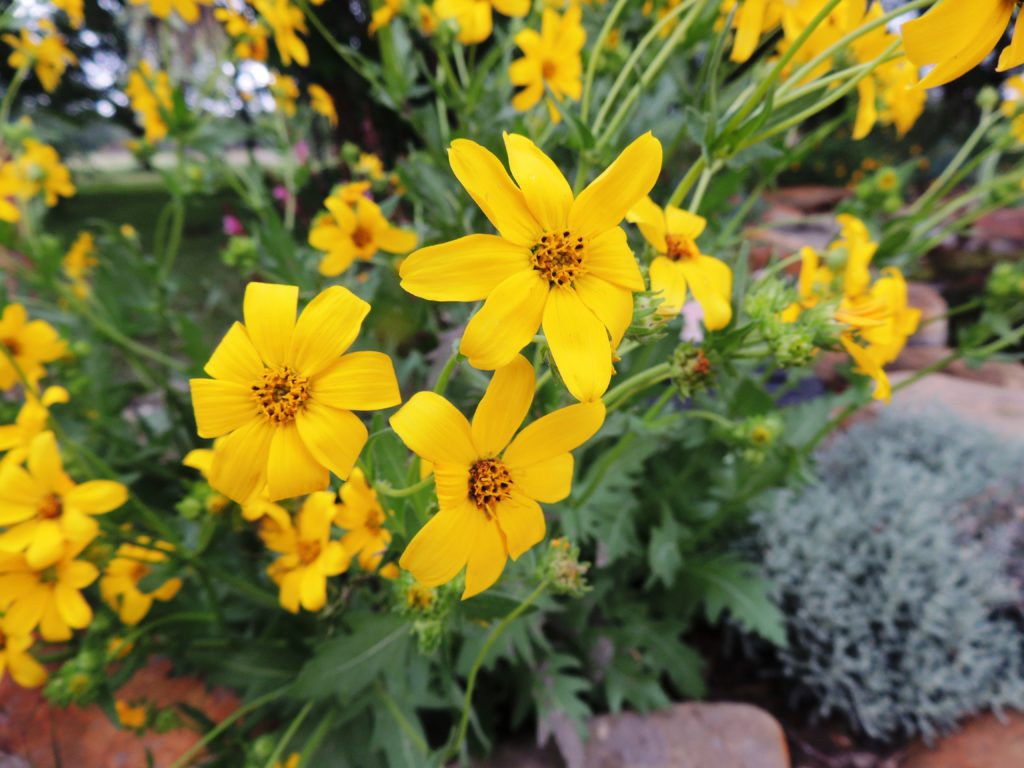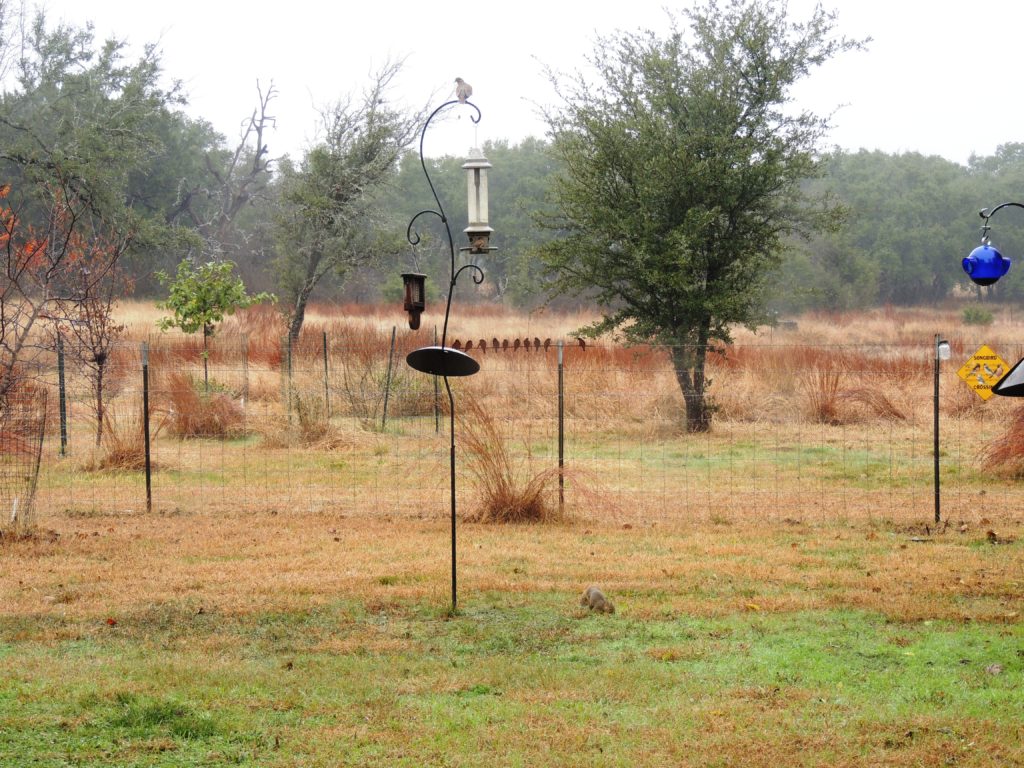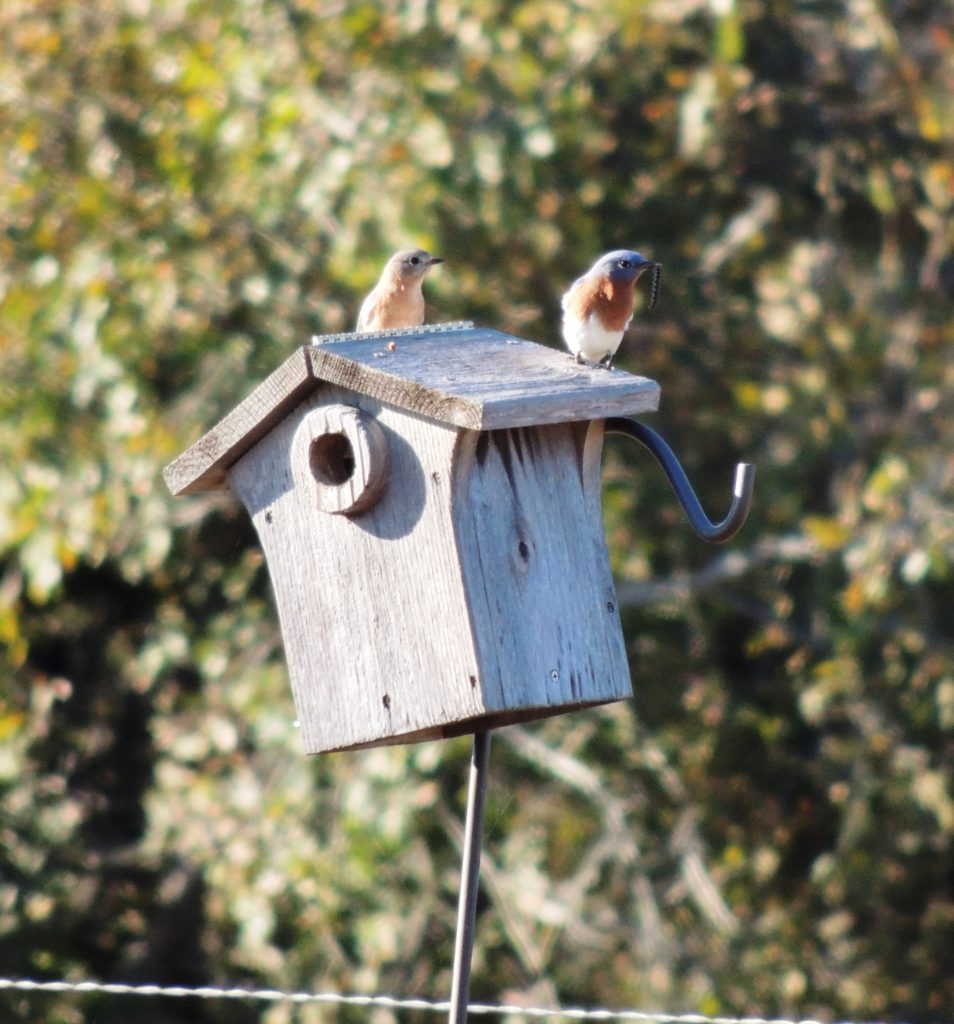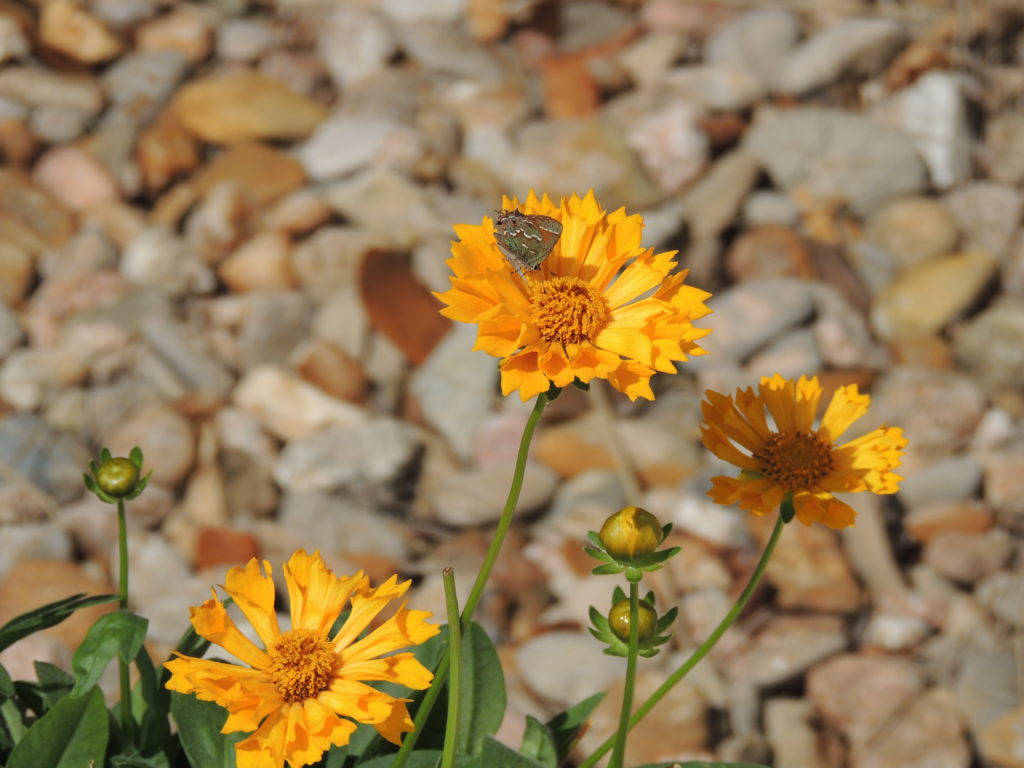Last fall was just plain awesome, with just enough rainy days to keep some flowers blooming for the birds and bees, and refreshingly cool for working outside and not being burned to death by summer heat.
Wandering around, there is a certain peaceful charm to the wintery field out back. The rusty red flower stalks of Little Bluestem grasses stay on the plant all winter long, making for colorful contrast on gloomy, misty days. I find this view so peaceful. Squirrel and dove peacefully searching for food while a gentle mist soaks into the ground.
The leaves have begun to turn on the Cannas and Mexican Buckeye near the pond. The waterlily growth has slowed down as it is prone to do in fall. Every week we have to pull out the faded bloom stalks and leaves so that they don’t rot in the pond. As more pond surface becomes bare of leaves and blooms you can really feel the slowing down of nature as it prepares for winter. The autumn colors are beautiful. Even the lawn has turned a mild orangey color.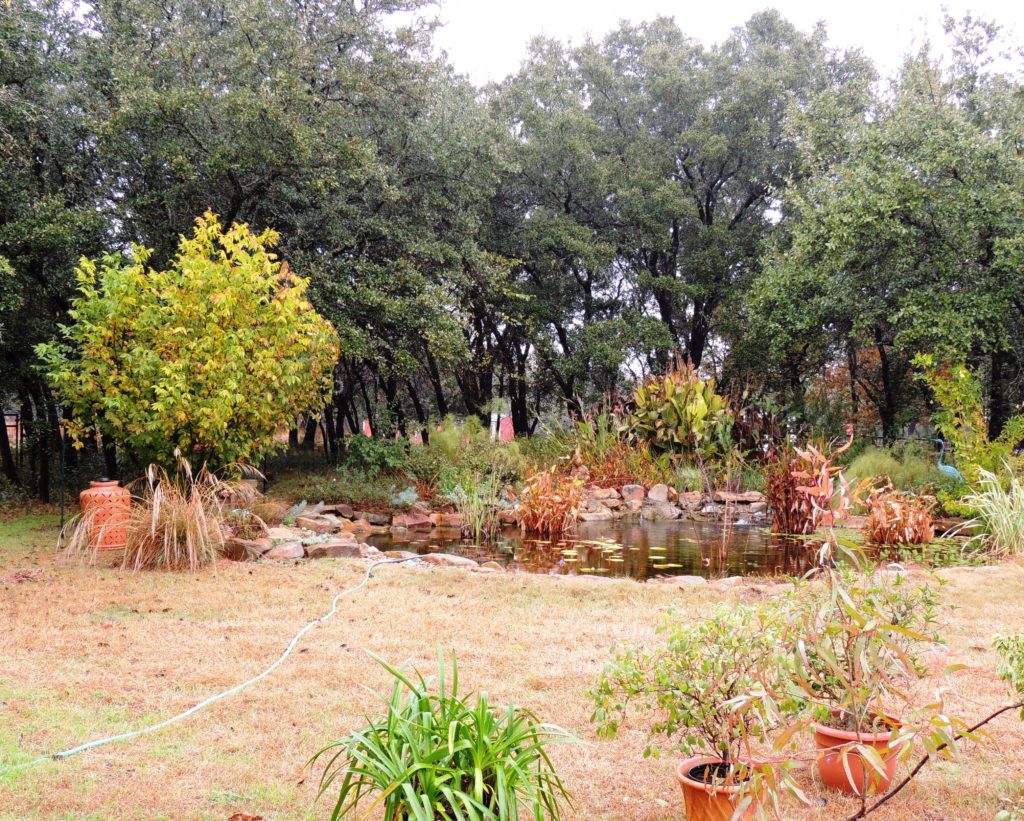
In contrast, just a couple of weeks later and the pond looks decidedly more gloomy, as most plant life has gone dormant and the leaves have long since fallen to the ground, where they will break down and become soil and nutrients for the next growing season.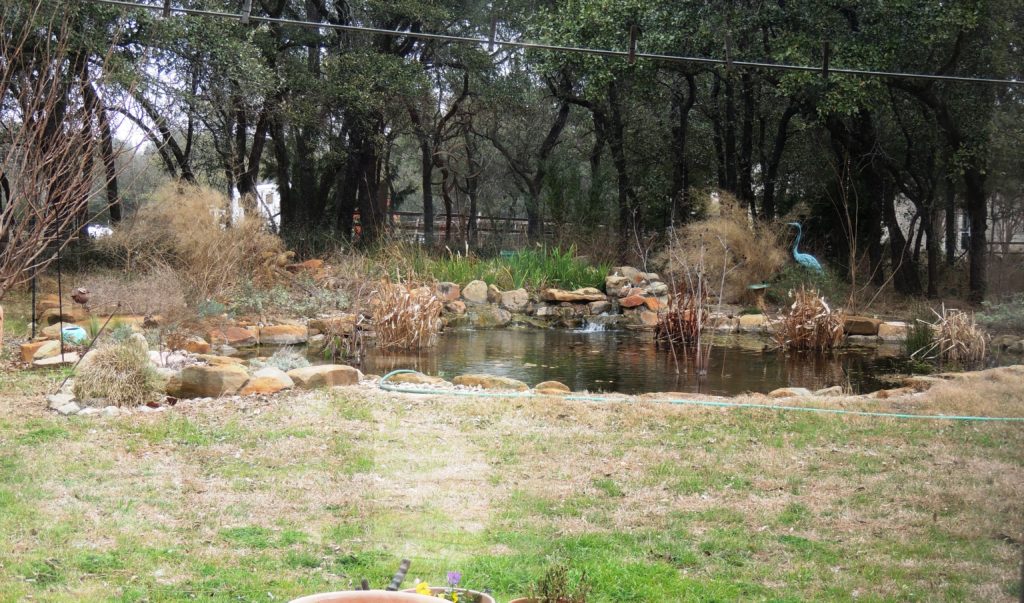
Behind the cowboy fence the Little bluestem grass is still glowing with its pretty flower stalks. I won’t be mowing that down till mid to late January. Cucumbers and tomatoes in the veggie garden have long since gone to sleep after working so hard this summer.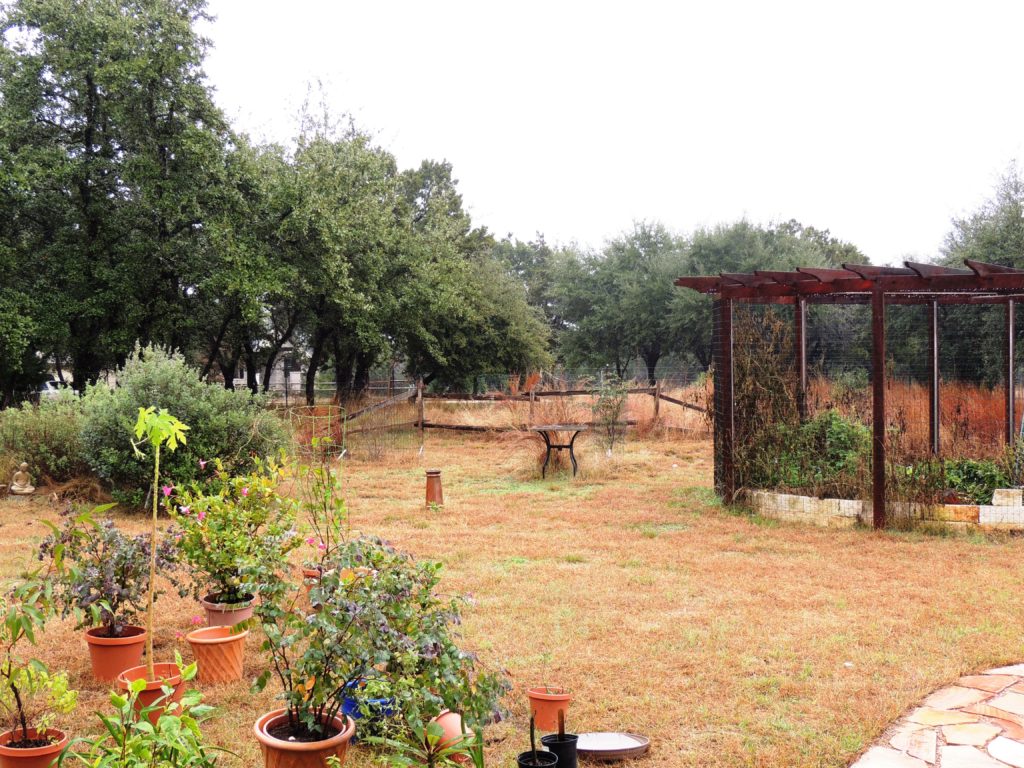
Winter was mild and wet except for 2 very cold days that killed off just about every tender leaf and twig. But the Robins did not seem to mind. They returned in huge numbers very early in January and we caught them picking berries from our hollies and plucking unsuspecting earthworms from the grassy fields outside. Their early morning calls are just a wonderful welcome change.
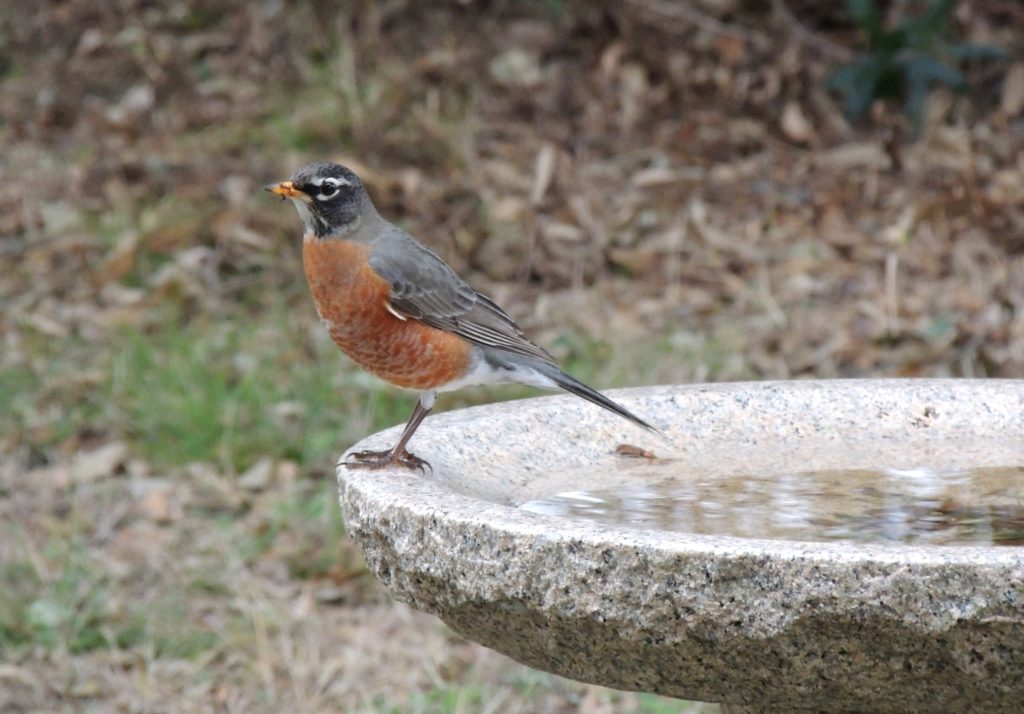
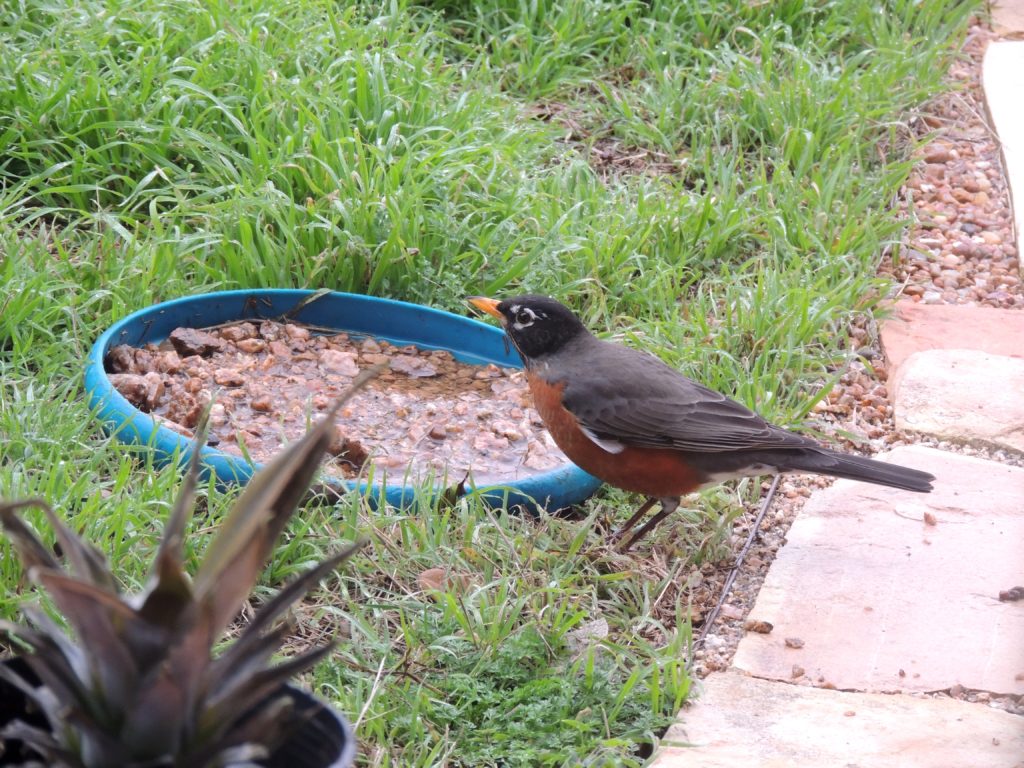
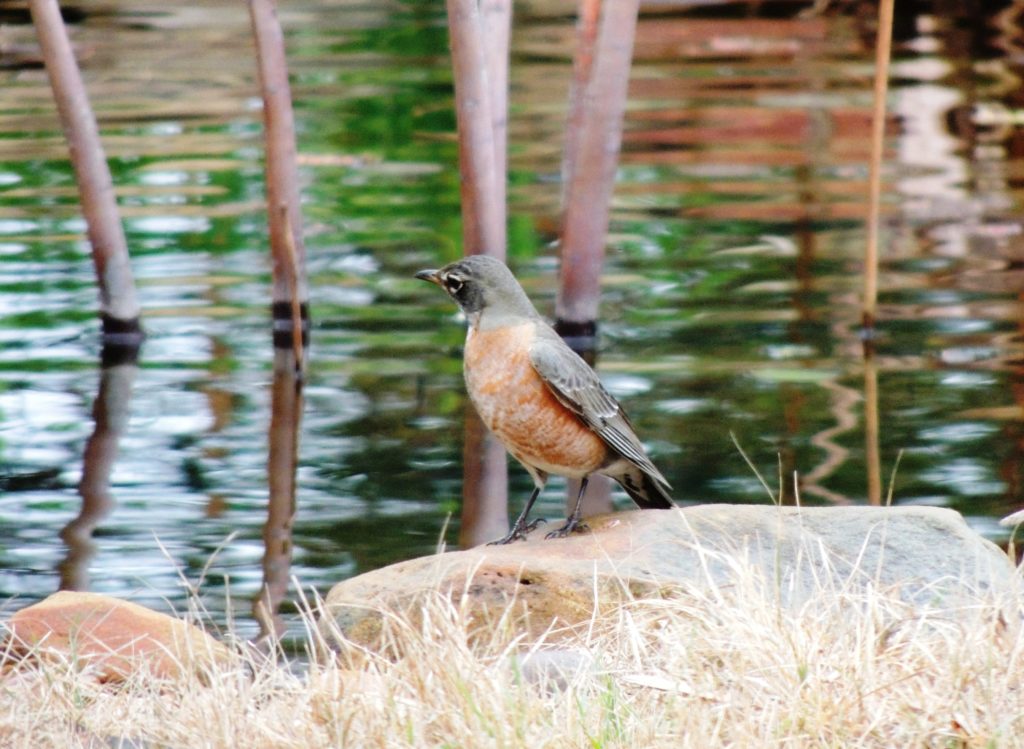 Other birds were of note this year too.
Other birds were of note this year too.
Bluebird pairs were scoping out nest boxes for the upcoming nesting season. It is hard to see but the male has a caterpillar in his beak. Doesn’t look like he wants to share that with the Misses though, regardless of the keen interest she’s showing.
Ever faithful Cardinals stay with us year long and it’s always nice to hear their call ramping up in spring. 
The beautifully marked Northern Flickers are common winter visitors. They faithfully visit the birdbaths and have done so for 6 years. They migrate back up north as the weather here heats up. Can’t say I blame them.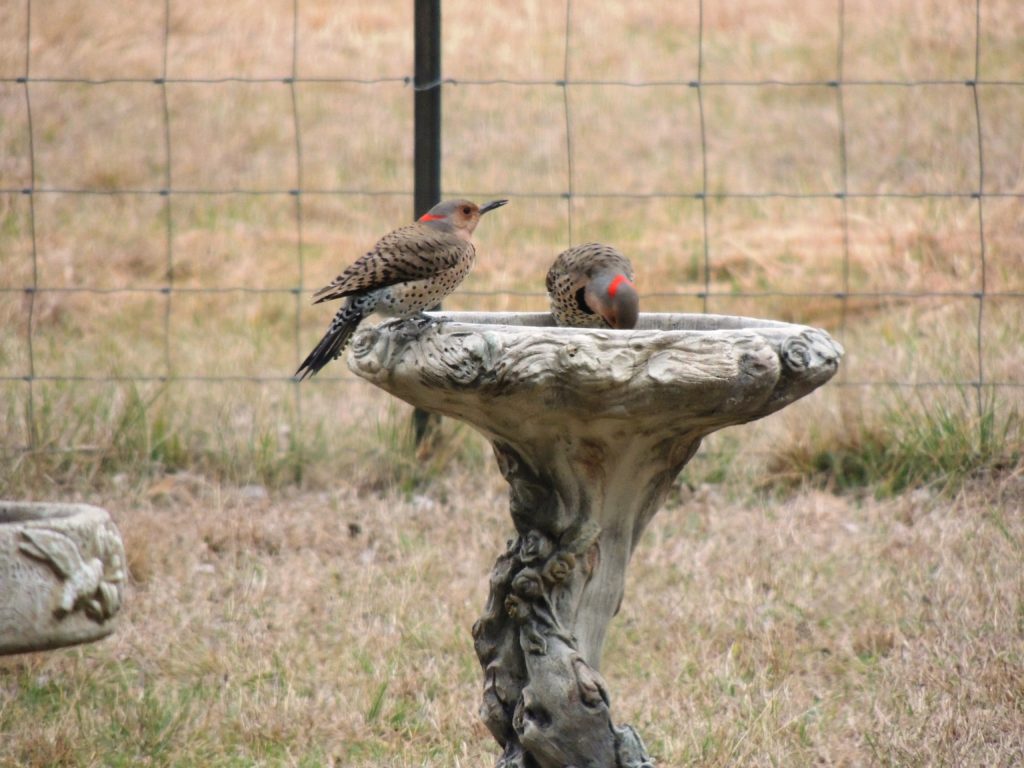
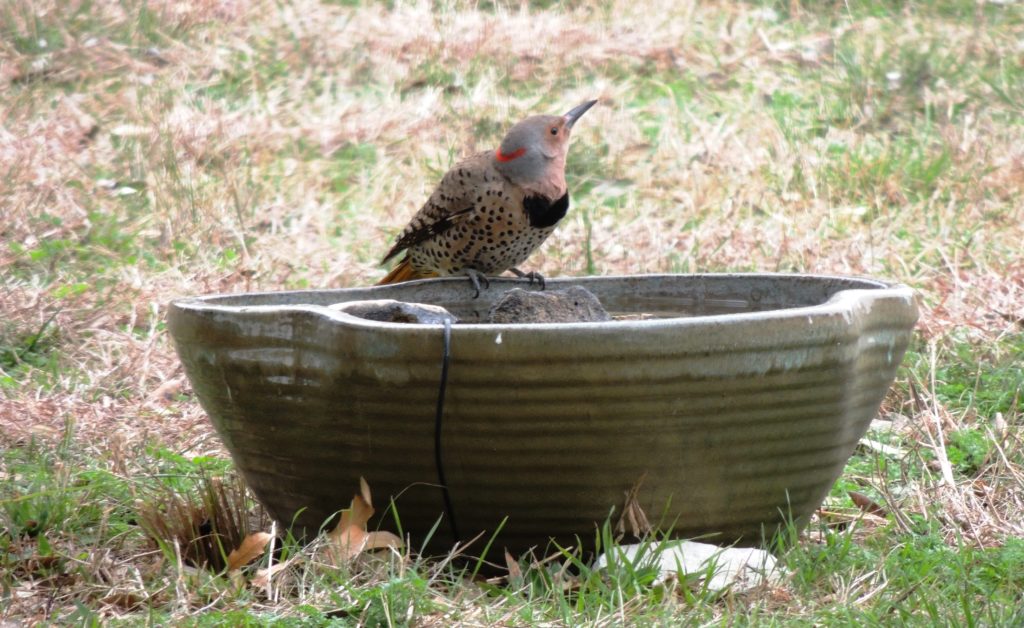
The yellow bellied woodpecker is a year round fixture in these parts. Their calls are ever present sounds in the garden announcing their arrival at bird feeders. These are large birds and send other birds scattering in all directions as they swoop down onto feeders.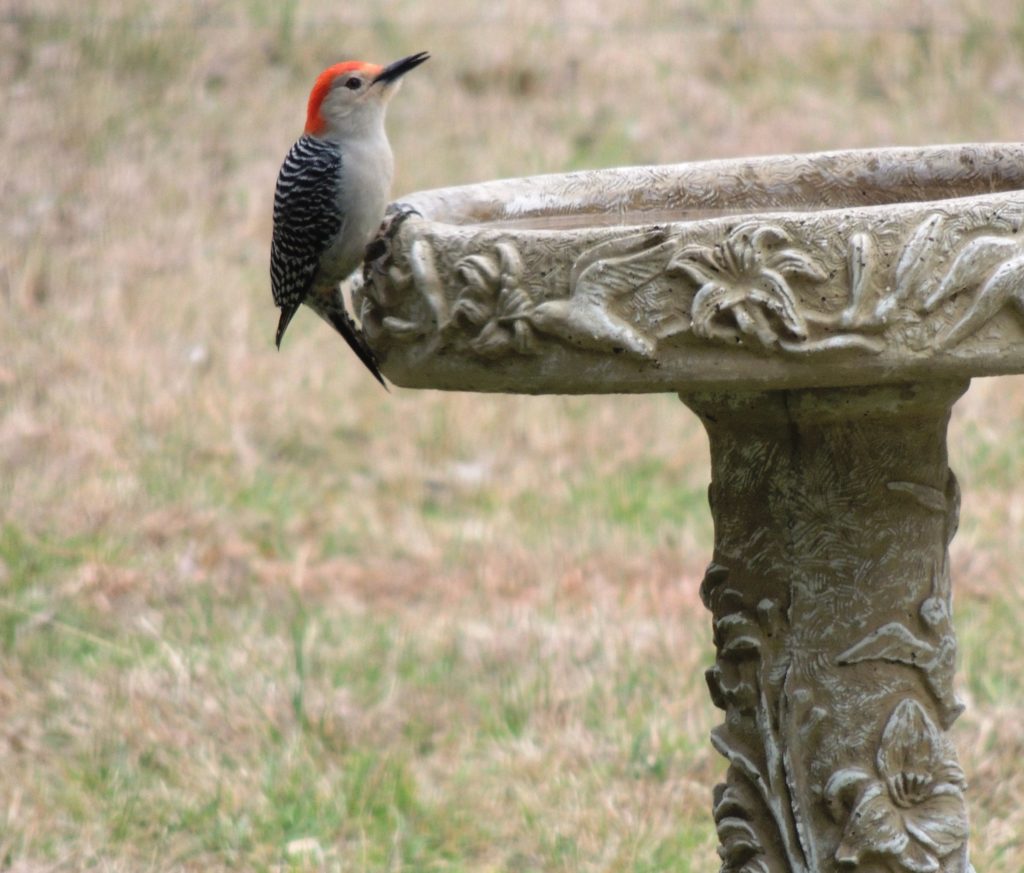 As it gets warmer, colorful days greet us, with blooming trees and shrubs to entice us to wander around, discovering new things every day.
As it gets warmer, colorful days greet us, with blooming trees and shrubs to entice us to wander around, discovering new things every day.
Butterflies arrive almost immediately, to take advantage of early bloomers like this Hairstreak butterfly on Jethro Tull Coreopsis in the front garden.
Wasps and flies, searching for nectar seem grateful for early blooming Blackhaw Viburnum’s white blooms on warm spring days. These plants are wonderful additions to any wildlife garden, providing pollen and nectar very early in the year and then blue berries for the birds in the fall. 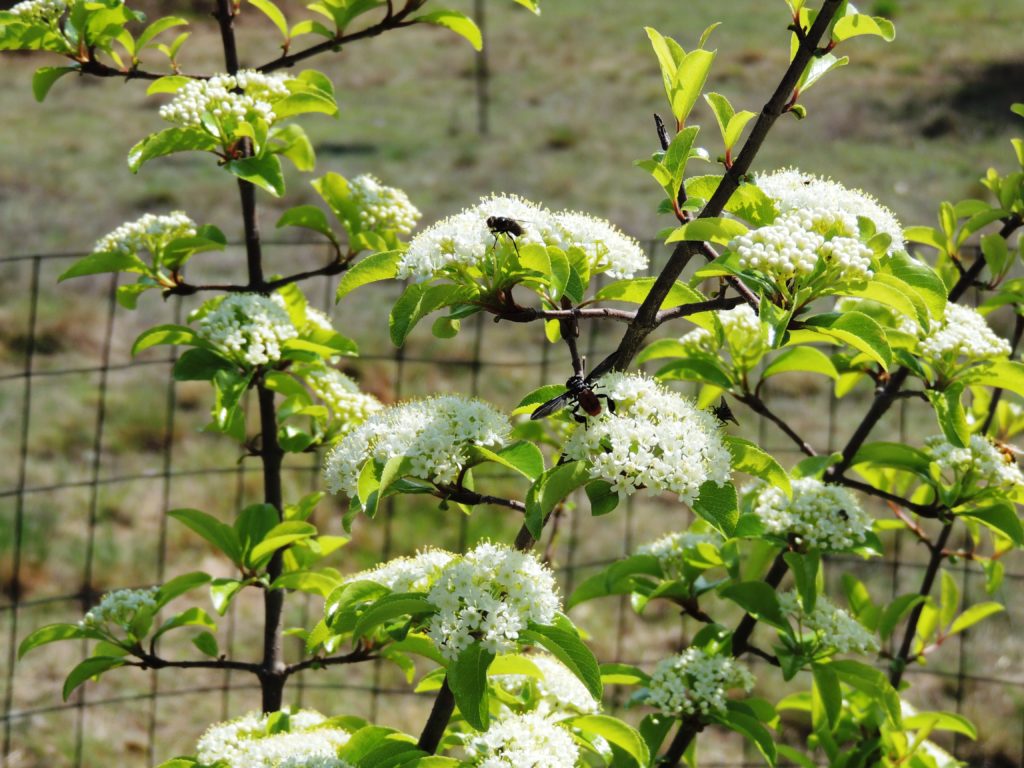 You won’t catch opportunistic Hairstreak butterflies missing out on this delicious snack either.
You won’t catch opportunistic Hairstreak butterflies missing out on this delicious snack either.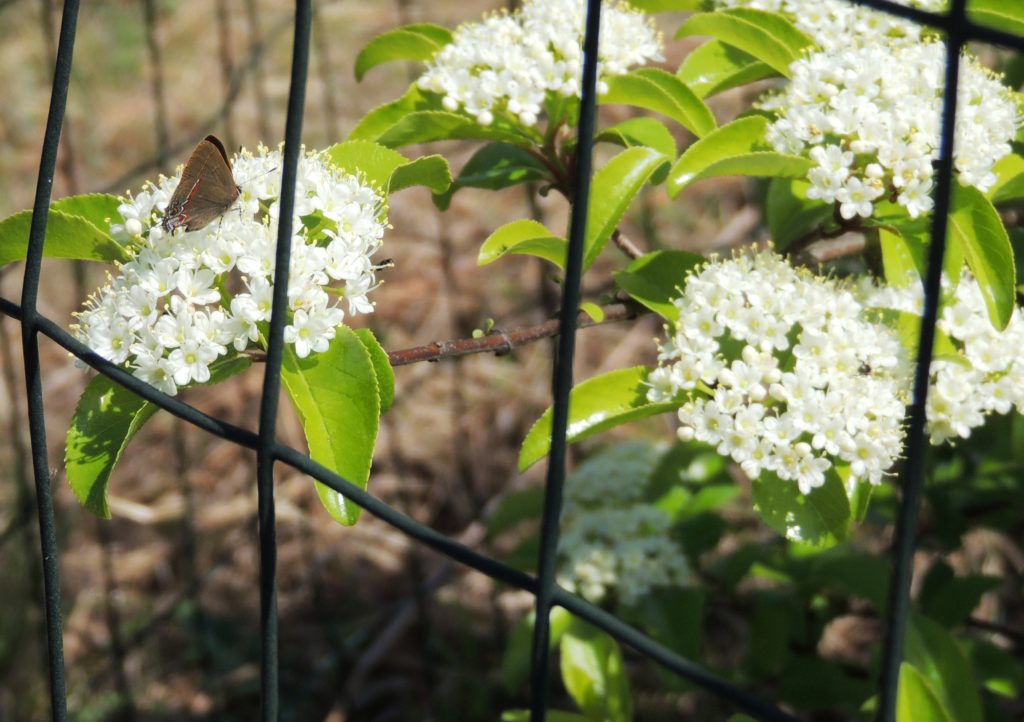
One easily gets distracted on these nature walk, as is the case with the appearance of this huge Raft Spider in the pond. You’ll find them sitting patiently on a floating leaves, resting their front legs on the water’s surface which allows them to feel for vibrations of potential prey. 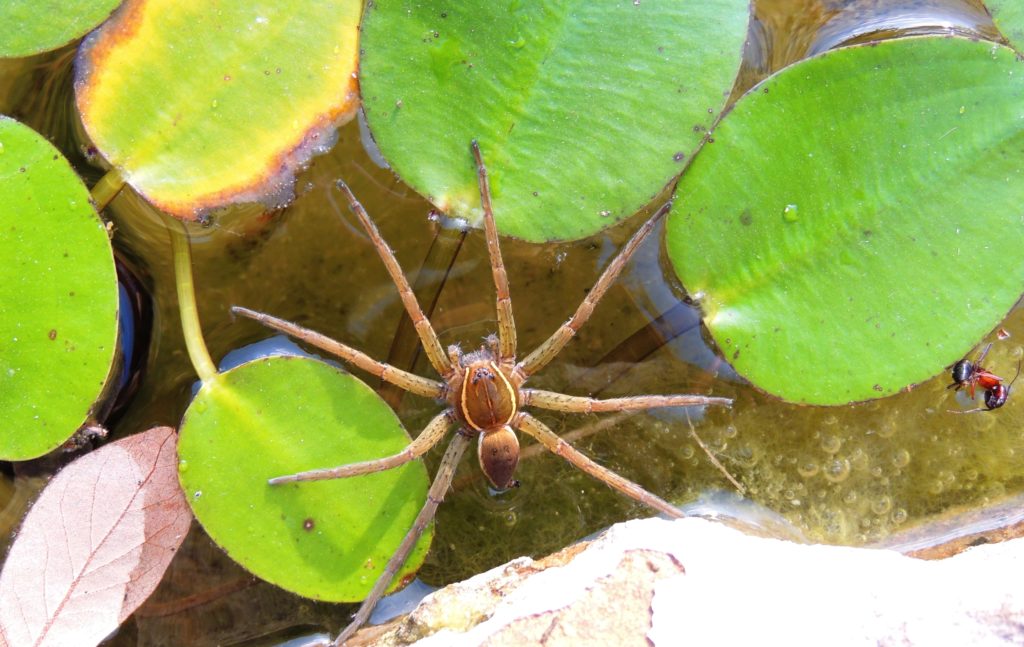 Using the water’s surface tension, they chase out onto the water to catch their prey, which includes aquatic insects, tadpoles and even small fish! They can even dive underwater to escape potential danger. We often see them warily watching us as we wade through the water on pond cleaning days.
Using the water’s surface tension, they chase out onto the water to catch their prey, which includes aquatic insects, tadpoles and even small fish! They can even dive underwater to escape potential danger. We often see them warily watching us as we wade through the water on pond cleaning days.
Moving along, the front field greets the spring wanderer with delicate blooms of the Eve’s necklace tree.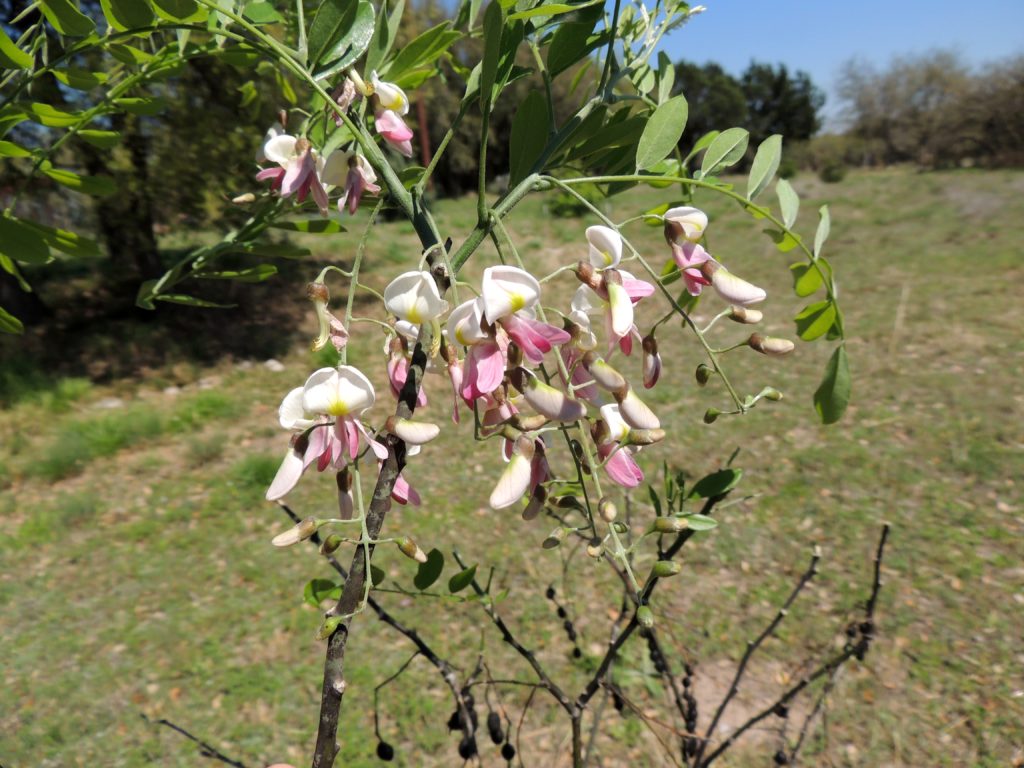 And Mexican Buckeye, which has not leafed out yet is ablaze with lacy, pink blooms that are adored by bees, moths and butterflies of every species alike.
And Mexican Buckeye, which has not leafed out yet is ablaze with lacy, pink blooms that are adored by bees, moths and butterflies of every species alike.
Bluebonnets are bursting out so early this year to the surprise of everyone, even this curious Roadrunner. He’s probably looking for lizards and juicy beetles hiding in that bushy, blue mound.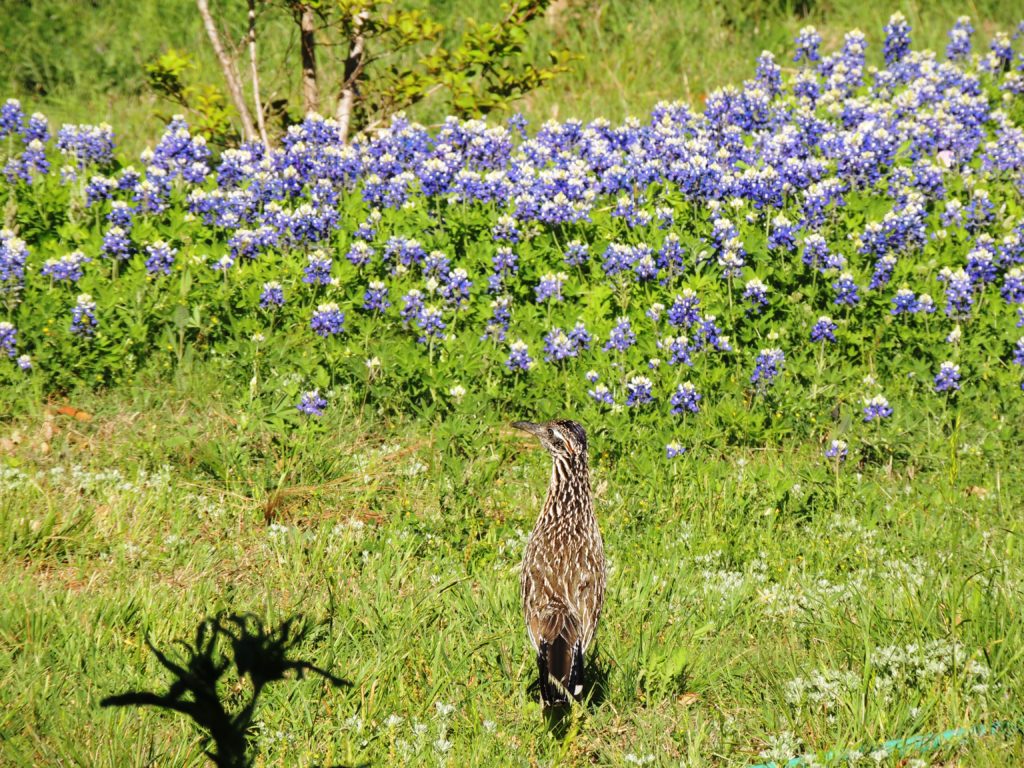
The front garden has Bluebonnets too. They soften the damage done to my agave. This is the result of deer rubbing their antlers against it in fall. Grrr… It will take a long time to recover from this, but it makes for a very formidable picture.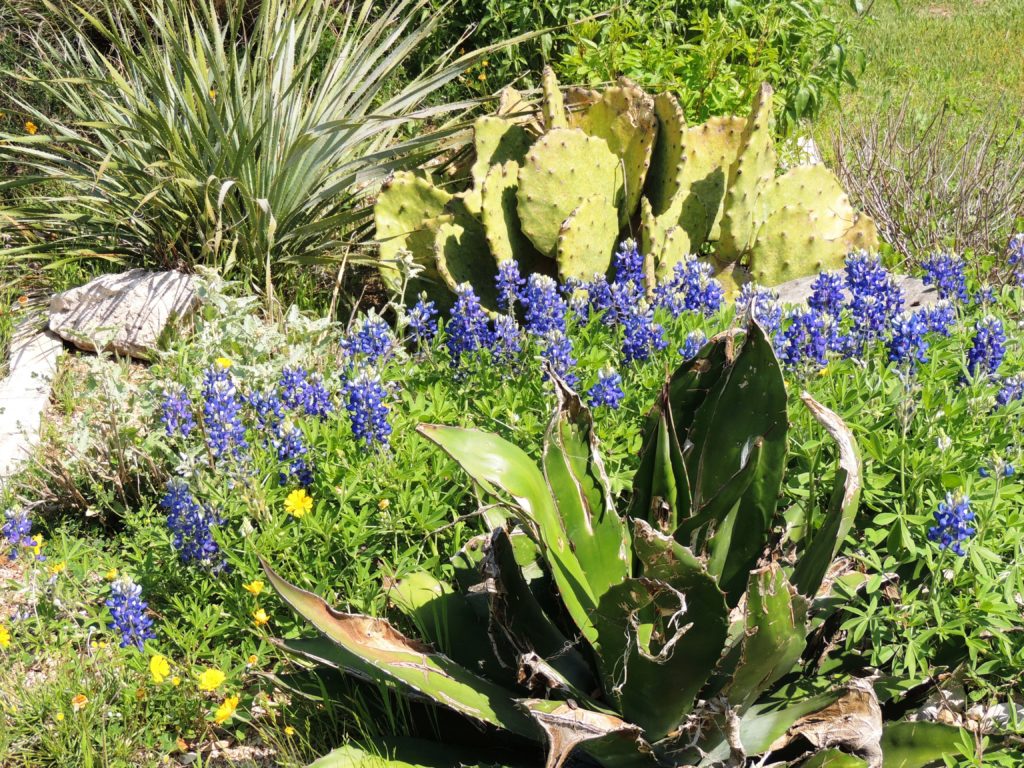
As the weather warms up birds are much more active, singing and chasing potential mates and building nests in bushes and trees. All this activity requires more food as this cardinal would like to remind me, pointedly standing on an empty suet feeder.
 Mockingbirds build nests relatively low in a tree or bush. This one is trying to make friends with a new type of bird it seems.
Mockingbirds build nests relatively low in a tree or bush. This one is trying to make friends with a new type of bird it seems.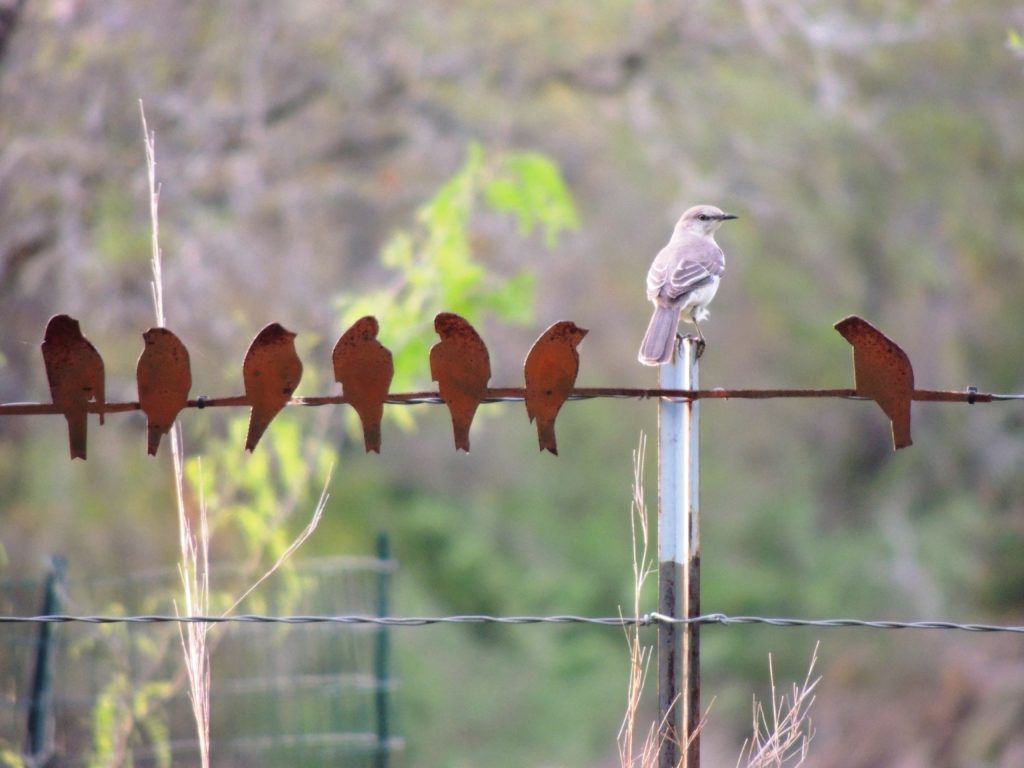
In the side garden the cowboy fence looks so pretty surrounded by bluebonnets and poppies.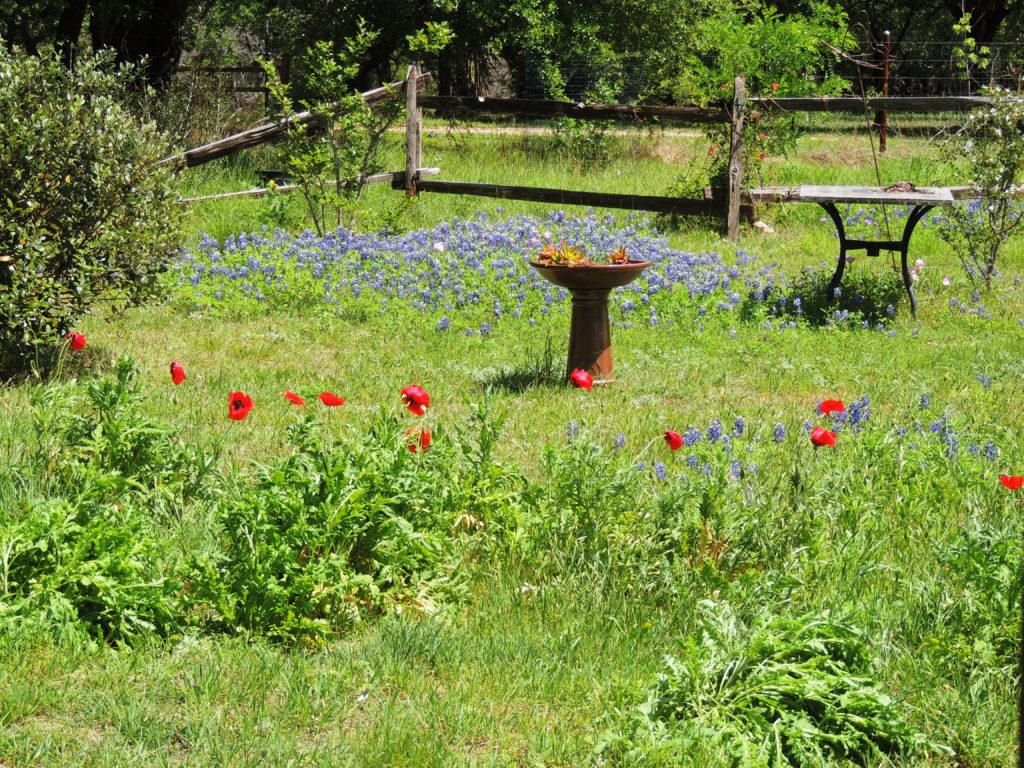 And the irises are doing the early April show as usual.
And the irises are doing the early April show as usual.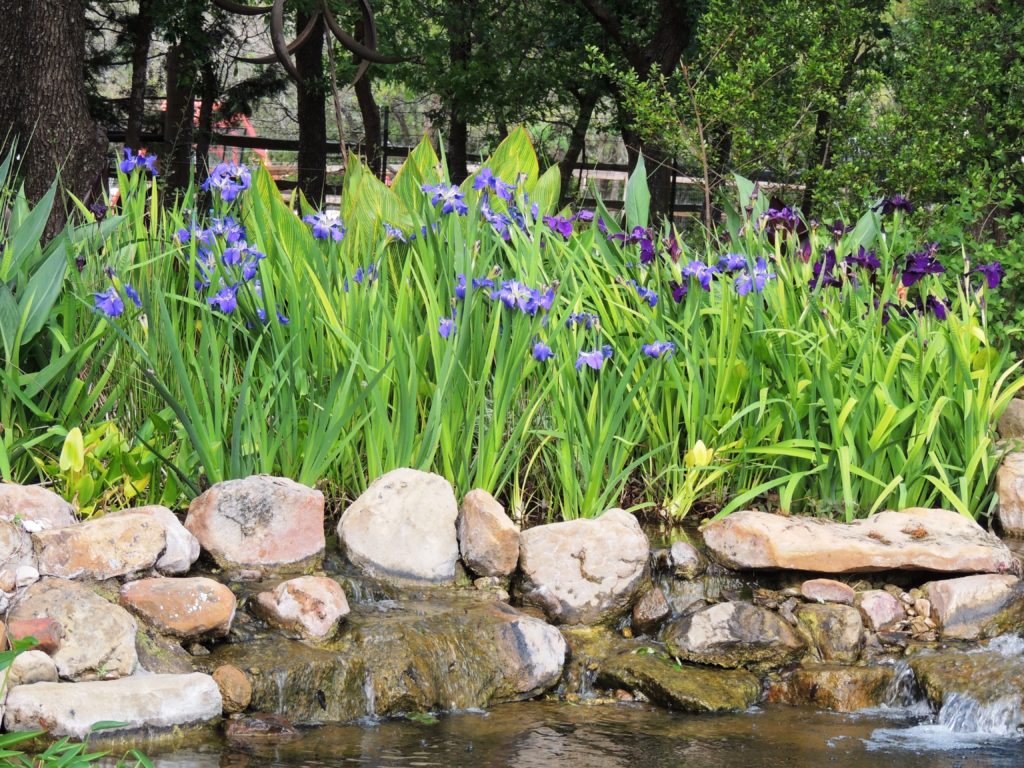 The pond so bleak just a few weeks before, has lost it’s wintery gloom, showing signs of fresh green life, while still very empty of waterlily activity. It will take some time to grow new roots and leaves after we had repotted them a week earlier.
The pond so bleak just a few weeks before, has lost it’s wintery gloom, showing signs of fresh green life, while still very empty of waterlily activity. It will take some time to grow new roots and leaves after we had repotted them a week earlier.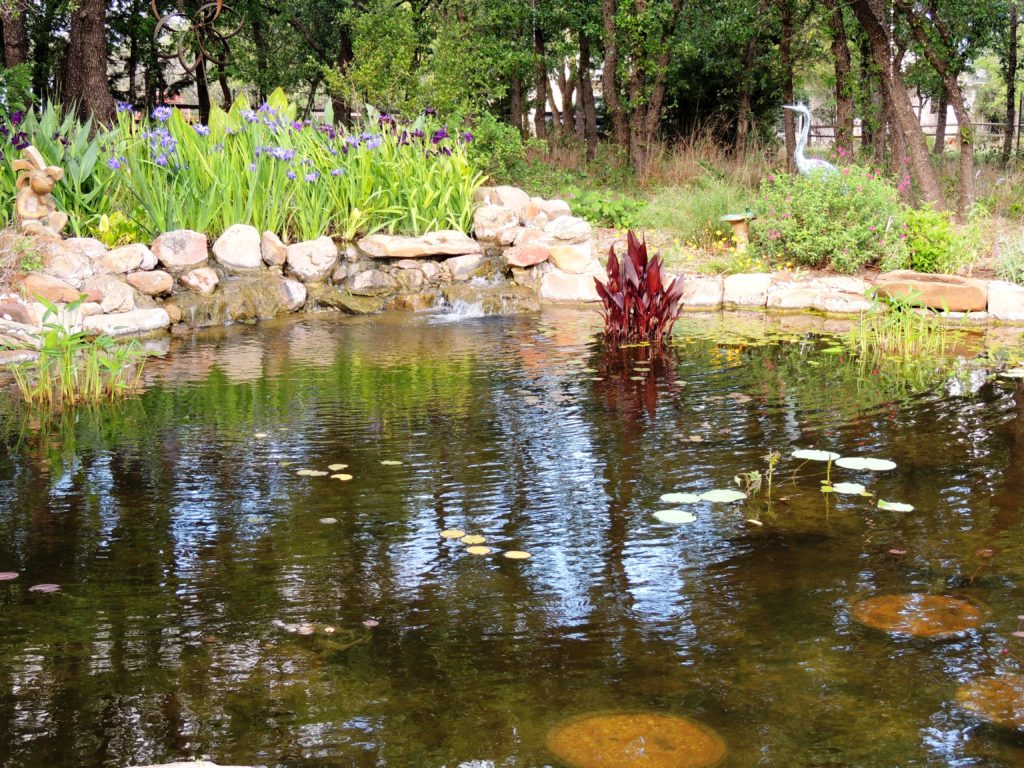
What an adventure the seasons are. All you need to do to find some excitement is wander in the garden. Never a dull moment as life changes daily.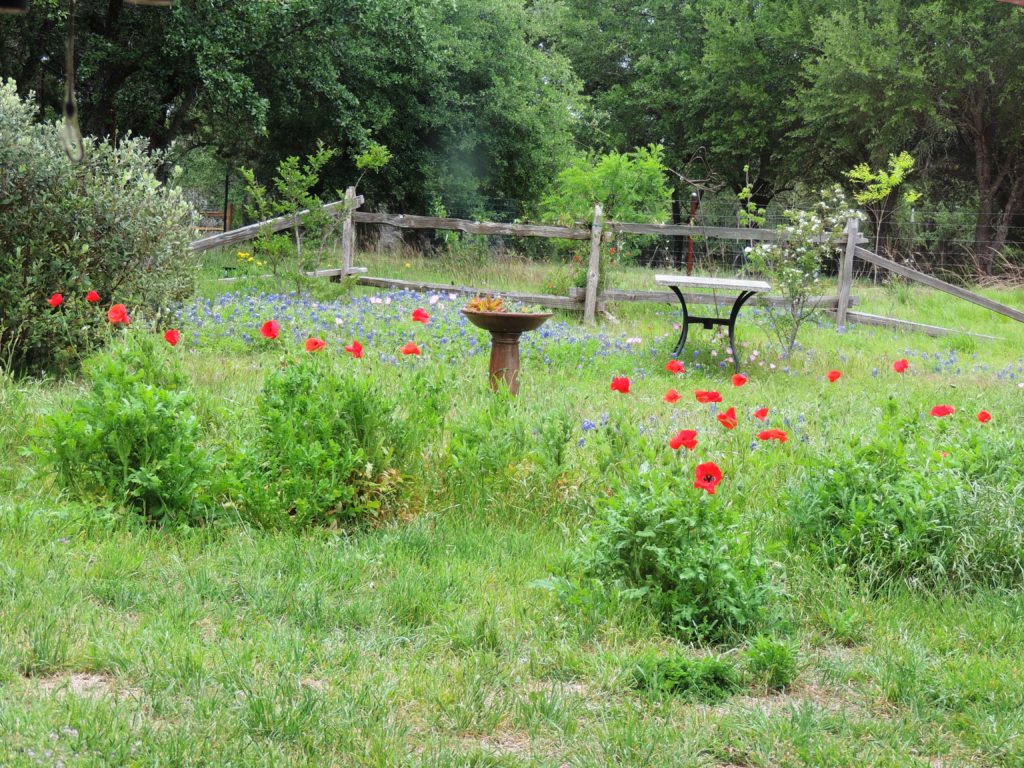
Soon the sun will be blazing from the sky as bright, if not brighter than this Engelman’s Daisy, chasing the curious wanderer back inside to the cool reprieve of shade and the most welcomed air-conditioner. It’s important to enjoy the moments as you wander along your path. Things change so quickly.